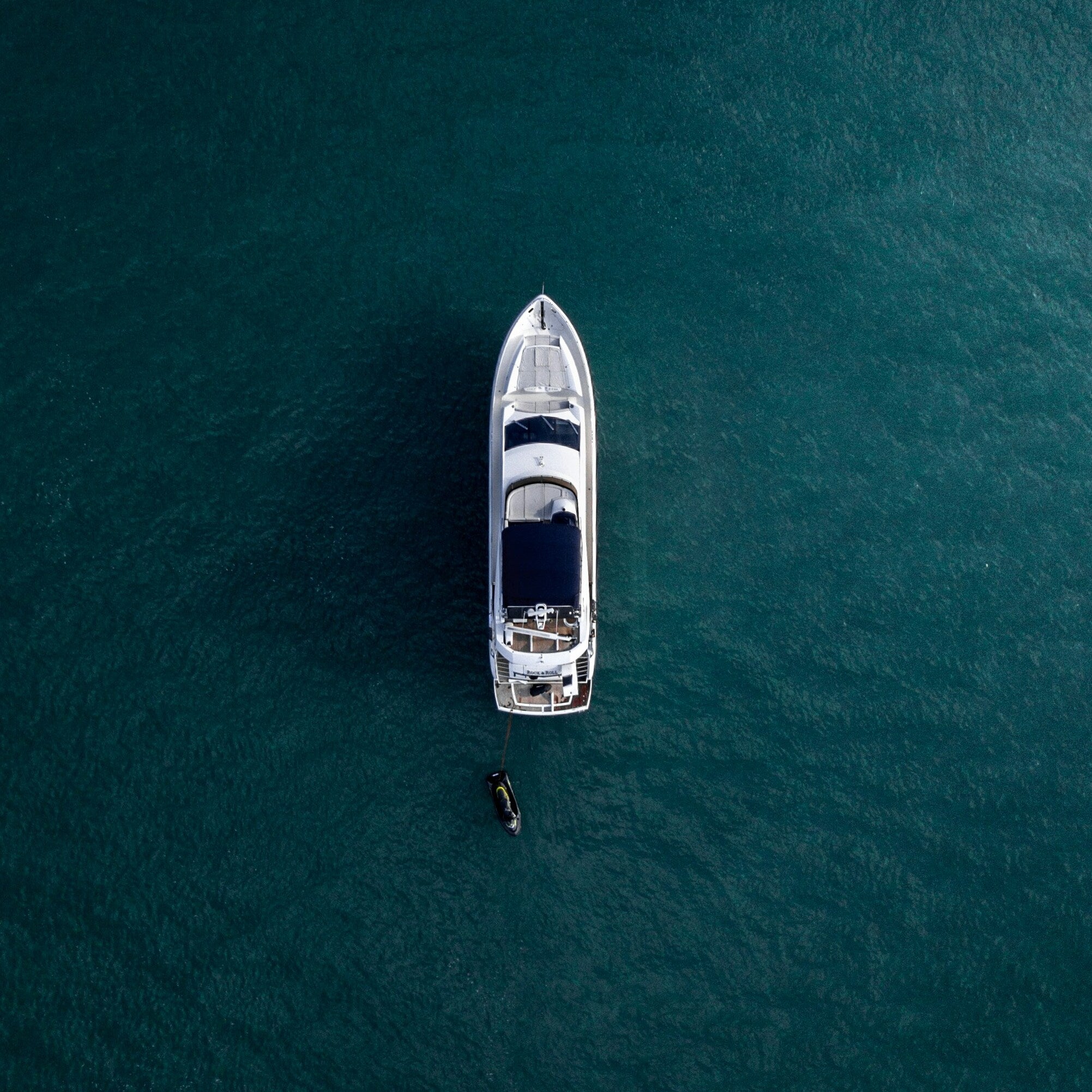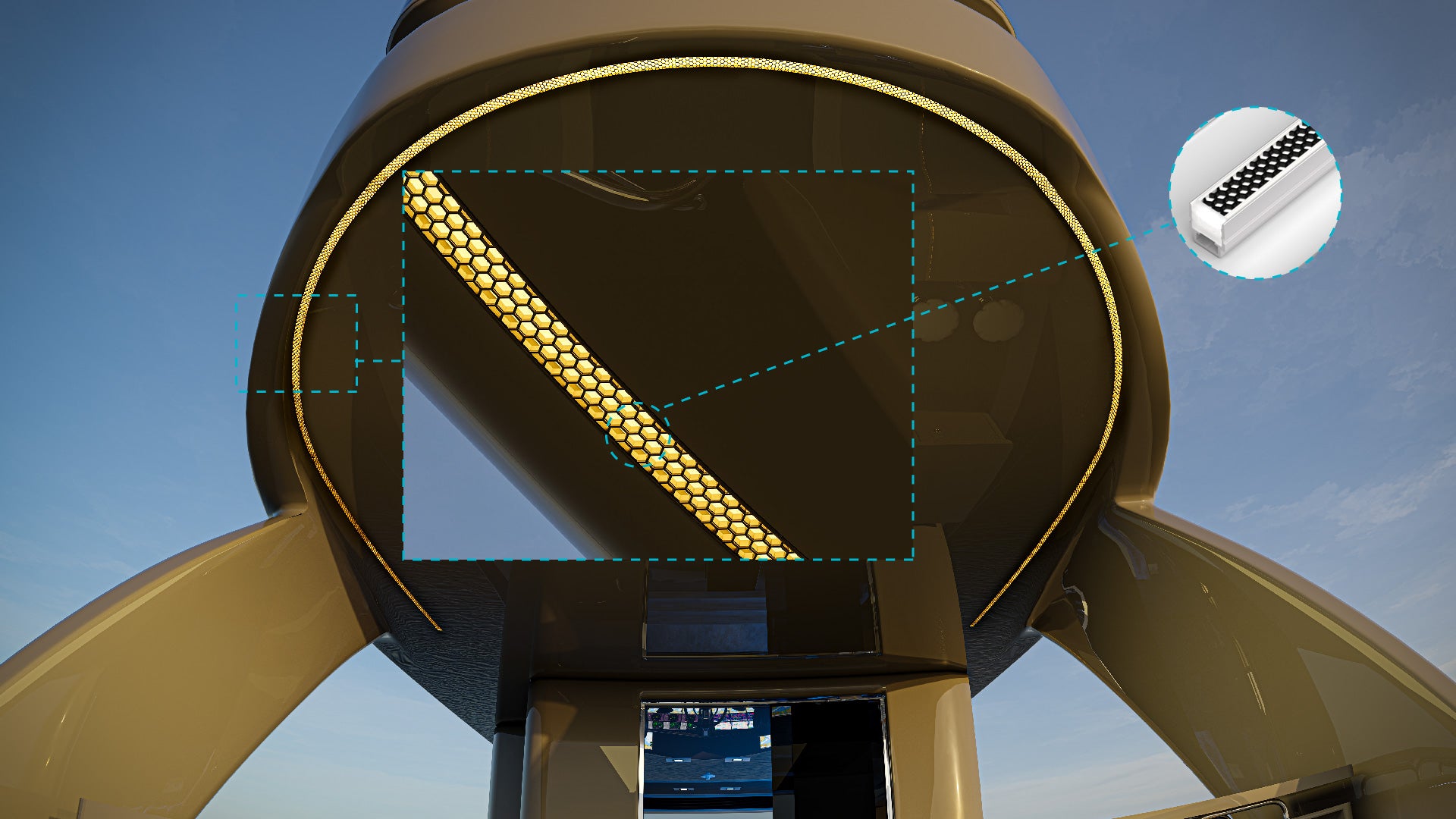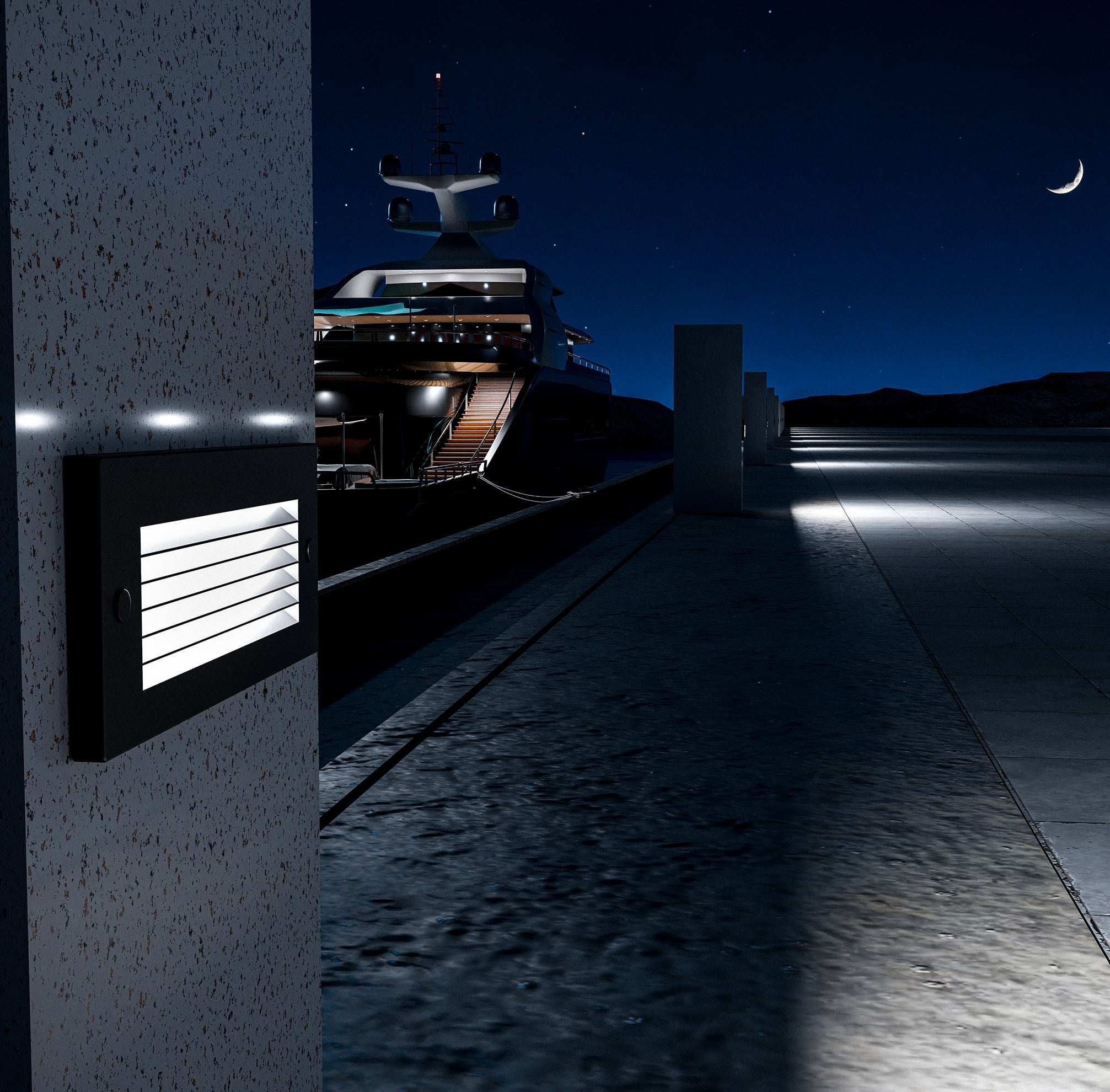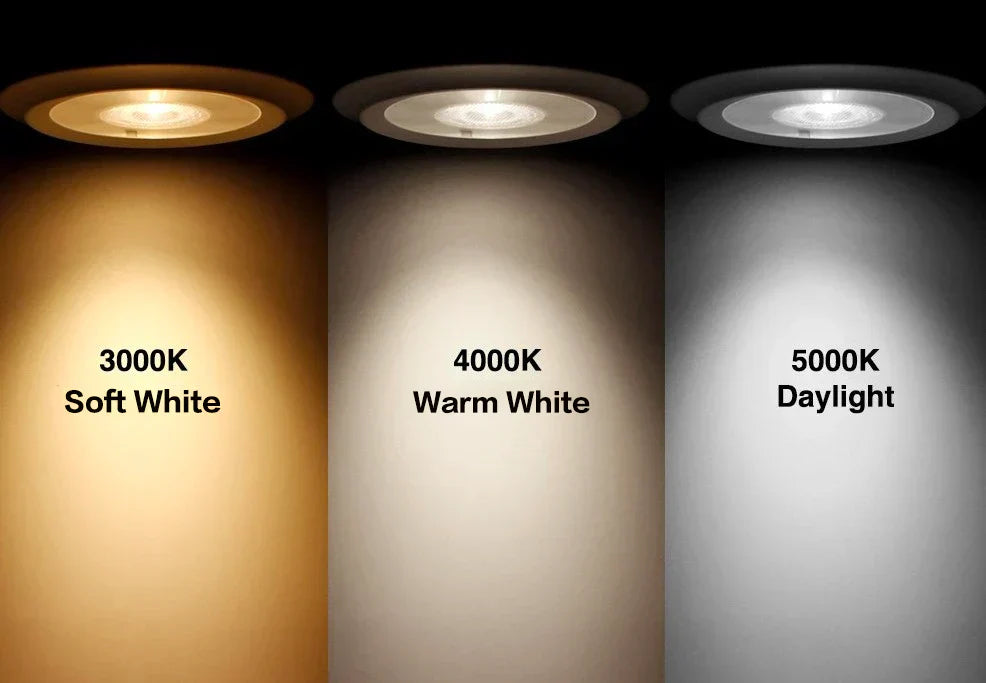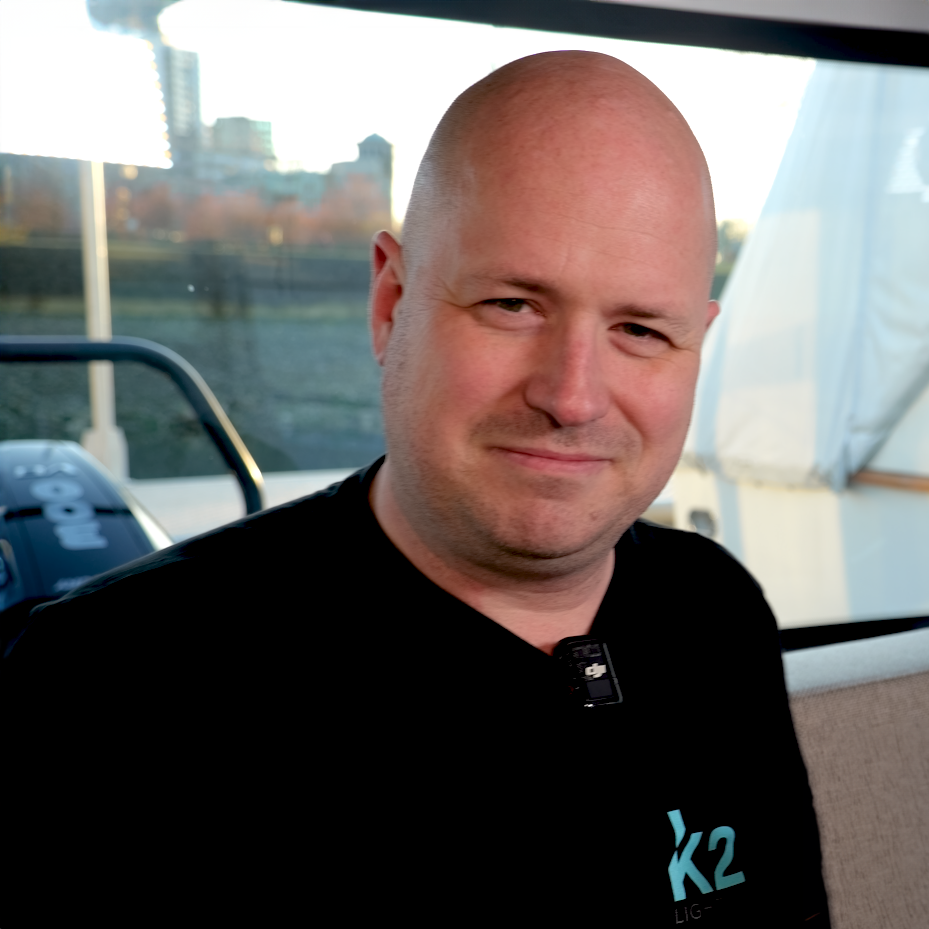Lighting plays an essential role in enhancing both the safety and ambiance of a boat, especially during springtime when days grow longer, but unpredictable weather and varying light conditions demand a versatile lighting approach. One often overlooked but crucial aspect of lighting design is color temperature—the hue and tone of light emitted by LED fixtures, measured in Kelvin (K). Choosing the right color temperature can significantly impact visibility, mood, and even energy efficiency on board.
Whether you’re navigating at dusk, relaxing in the cabin, or enjoying an evening anchored under the stars, understanding how color temperature works and selecting the right tones for each area of your boat can make all the difference.
This blog explores the best color temperatures for different marine environments and activities, ensuring your springtime boating experience is both functional and enjoyable.
Understanding Color Temperature in Marine LED Lighting
What is Color Temperature?
Color temperature refers to the appearance of light emitted by an LED fixture, measured in degrees Kelvin (K). Lower Kelvin values (e.g., 2700K) produce a warm, yellowish light, while higher values (e.g., 6000K) produce a cooler, bluish-white light. The scale starts with warm whites (2700K–3500K), moves to neutral whites (4000K–5000K), and peaks at cool whites (5000K–6500K). Each range serves a distinct purpose in different environments and activities on a boat, from task lighting to relaxation spaces.
Why Color Temperature Matters on Boats
The choice of color temperature isn’t just about aesthetics—it’s about functionality, safety, and energy efficiency. Warm lights are ideal for creating a cozy, inviting atmosphere, while cooler tones improve visibility and focus during critical tasks. For boat owners, understanding how color temperature impacts everything from night navigation to cabin comfort is key to optimizing your lighting system for spring conditions.
The Role of Color Temperature in Springtime Boating Conditions
Adapting to Spring Weather Challenges
Springtime boating often involves foggy mornings, overcast afternoons, and unpredictable weather patterns. These conditions can drastically affect natural light levels and visibility. Cooler white LEDs (5000K–6500K) cut through fog and haze more effectively, providing clearer visibility. On the other hand, warmer whites (2700K–3500K) are better suited for creating a welcoming glow during relaxed evening cruises or anchored nights.
Balancing Daylight and Artificial Lighting
Spring days offer a blend of natural sunlight and periods of low light during early mornings and late evenings. Choosing lighting fixtures with neutral to cool tones helps complement natural daylight, ensuring a smooth transition between daytime and artificial lighting. This balance reduces eye strain and maintains an aesthetic harmony throughout your boat.
Best Color Temperatures for Navigation Lighting
Why Navigation Lights Require Specific Color Temperatures
Navigation lights play a critical role in marine safety, signaling your boat’s position, direction, and intent to nearby vessels. These lights must be bright, highly visible, and compliant with maritime regulations. Cool white LEDs, typically in the 5000K–6000K range, ensure maximum brightness and clarity.
Recommended Color Temperature for Navigation Lights
Cool white LEDs, often rated around 6000K, are the preferred choice for navigation lighting. Their bright, crisp illumination ensures visibility even in poor weather conditions, allowing other vessels to recognize your boat from a distance and understand its movement.
Best Color Temperatures for Deck and Walkway Lighting
Balancing Visibility and Ambiance on Decks
Deck and walkway lighting must strike a balance between functionality and ambiance. During nighttime activities or while navigating slippery surfaces, bright and focused lighting is essential. However, overly harsh lighting can diminish the overall aesthetic appeal of your deck. Neutral white LEDs (4000K–5000K) are an ideal choice, offering clear visibility while maintaining a comfortable glow.
Recommended Color Temperature for Deck Lights
For deck and walkway lighting, a 4500K neutral white strikes an excellent balance. It ensures safety and clarity without creating glare or an overly harsh atmosphere, making it perfect for both functional tasks and evening gatherings.
Best Color Temperatures for Cabin Lighting
Creating Comfort and Functionality in Cabins
The cabin serves as a multifunctional space for dining, relaxing, and resting. Lighting here needs to provide both warmth and clarity. Warm white tones (2700K–3500K) create a cozy, inviting atmosphere ideal for relaxation, while slightly cooler neutral tones (4000K) are better suited for reading or working on tasks.
Recommended Color Temperature for Cabin Lights
For cabins, 3000K warm white lighting works best for living and sleeping areas, while 4000K neutral white is recommended for task lighting zones such as kitchens or dining areas.
Best Color Temperatures for Underwater Lighting
Enhancing Visibility and Aesthetics Below the Waterline
Underwater lighting serves both aesthetic and functional purposes. Cool white (5000K–6000K) LEDs offer excellent underwater visibility, making it easier to inspect hulls or observe marine life. For purely aesthetic purposes, blue-toned LEDs create a calming, mesmerizing underwater glow.
Recommended Color Temperature for Underwater Lights
For practical underwater visibility, 5000K cool white LEDs are ideal. For mood lighting and aesthetic appeal, blue LEDs are the preferred choice.
Best Color Temperatures for Accent and Decorative Lighting
Highlighting Design Features with Color Temperatures
Accent lighting is used to emphasize architectural details, stairways, seating areas, or boat logos. Depending on the effect you want, warm white (3000K) offers a soft, intimate glow, while cool white (5000K) delivers a modern, crisp aesthetic.
Recommended Color Temperature for Accent Lights
For accent lighting, 3000K warm white works best for intimate seating areas, while 5000K cool white highlights architectural details effectively.
Matching Color Temperatures with Activities on Board
Task Lighting vs. Ambient Lighting
Task-oriented areas, such as workstations, kitchens, and navigation zones, require cooler temperatures (5000K–6000K) for enhanced focus. Ambient lighting zones, like lounge areas and bedrooms, benefit from warmer temperatures (2700K–3500K).
Recommended Color Temperature by Activity
- Task lighting: 5000K–6000K
- Ambient lighting: 2700K–3500K
- General-purpose areas: 4000K
Energy Efficiency and Color Temperature Choices
How Color Temperature Affects Energy Use
Higher Kelvin LEDs generally produce brighter light outputs, which can slightly increase energy draw. However, modern marine LEDs are highly energy-efficient, balancing brightness with minimal energy consumption.
Dimmable LEDs for Better Control
Dimmable LED systems allow fine-tuned control over brightness and energy usage, enabling boat owners to adjust lighting based on activities and energy needs.
Common Mistakes to Avoid When Choosing Color Temperatures
Using the Same Color Temperature Everywhere
Different zones have different needs. Using the same color temperature throughout the boat can create an uncomfortable or imbalanced environment.
Overlooking Fixture Placement
Poor placement can result in uneven lighting, glare, or dark spots, diminishing the effectiveness of the chosen color temperature.
Understanding and selecting the right color temperatures for different marine applications is key to enhancing both safety and ambiance on your boat. With thoughtful planning, you can create an inviting, functional, and visually appealing environment for your spring adventures.
Explore K2 Lighting's collection of marine LED fixtures available in multiple color temperatures for every application.

